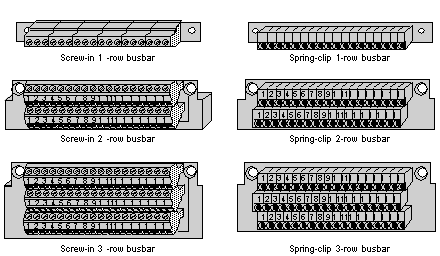|
|
Original instructions
|

|
Busbar type
|
Screw-in
|
Spring-clip
|
|---|---|---|
|
Max. load at 20 deg. C
|
250 V
14 A
|
250 V
17.5 A
|
|
Short circuit
|
100 A 30 s
|
100 A 30 s
|
|
Test voltage
|
2.2 kV
|
2.2 kV
|
|
Creepage / air dist.
|
per IEC 664A
|
per IEC 664A
|
|
Pollution
|
Degree 2
|
Degree 2
|
|
Contact derating at 70 deg. C
|
ca. 60% of nominal value
|
ca. 60% of nominal value
|
|
Busbar Type
|
Part Number
|
# of Rows
|
Wire Size
|
|---|---|---|---|
|
Screw-in
|
170 XTS 006 01
|
1
|
If one wire, use 10AWG (4mm2) max.
If two wires, use 14AWG (2.5mm2) max.
|
|
170 XTS 005 01
|
2
|
One or two wires 14AWG (2.5mm2) max.
|
|
|
170 XTS 004 01
|
3
|
One or two wires 14AWG (2.5mm2) max.
|
|
|
Spring-clip
|
170 XTS 007 01
|
1
|
If one wire, use 10AWG (4mm2 max.
If two wires, use 14AWG (2.5mm2) max.
|
|
170 XTS 008 01
|
2
|
One or two wires 14AWG (2.5mm2) max.
|
|
|
170 XTS 003 01
|
3
|
One or two wires 14AWG (2.5mm2) max.
|